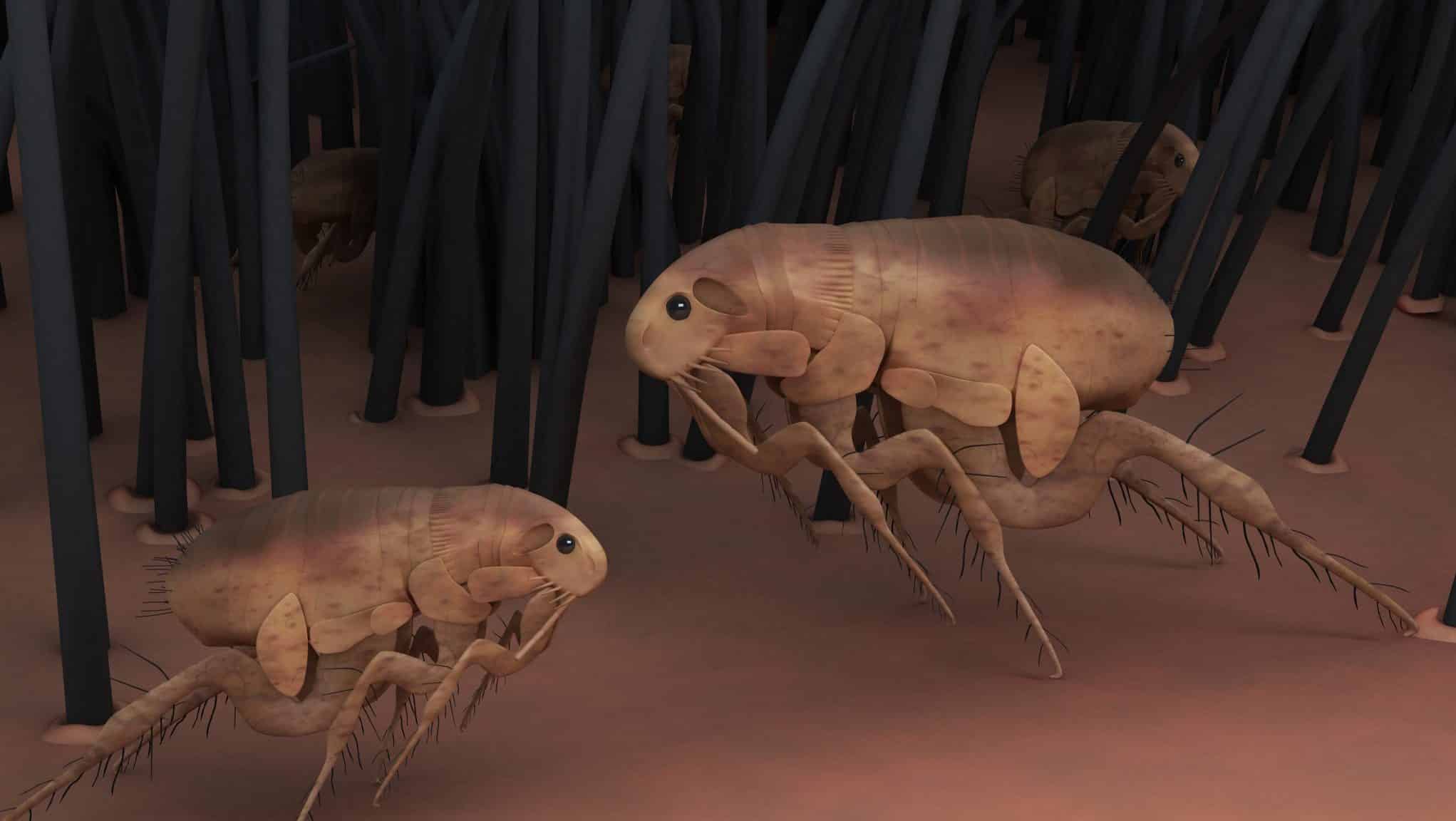 Updated October 2017.
Updated October 2017.
In 2011, the U.S. suffered through one of its hottest summers on record. The sweltering temperatures spurred a significant increase in the flea population, which thrives in hot and humid environments. Flea pupae can lay dormant throughout the cold winter months and reawaken during summer if left undisturbed, making the summer and fall months time to take action. If your pets exhibit any signs of having fleas this season, immediate flea removal and extermination is of the utmost importance in order to prevent you and your pets from harm.
Got Fleas? Call a knowledgeable licensed professional at 1-800-323-7378 or contact us to request a FREE Quote, ask us a question or Schedule a Service!
Flea Facts
Fleas are small, wingless parasitic insects that feed off of warm-blooded animals by way of their skin-piercing mouths. A flea’s life begins after an adult female flea feeds off its host. She will then lay eggs (around 4-8), which tend to fall into the animal’s surroundings. After hatching, the eggs develop into larvae and then enter the pupal stage. During the pupal stage, the flea encases itself in a cocoon and is thus resistant to most flea removal treatments. This stage can last up to 20 weeks, after which time the adult flea emerges from the cocoon either on its own or is spurred to do so by the vibrations made by any humans or animals that may be present.
Once the flea has developed into an adult, it will latch onto a host and begin feeding on its blood by piercing the animal’s skin with its mouth. A female flea will lay eggs after every blood meal, which can add up to 400-500 eggs within its lifetime of a few days or weeks.
How Do Pets Get Fleas?
 An adult flea can jump up to 7 inches and can also crawl, making pets especially prone to flea infestation since they are low to the ground. Flea eggs tend to fall off the infected animal when it scratches itself, landing throughout its surroundings. Any animal that comes into contact with an infested area is susceptible to getting fleas.
An adult flea can jump up to 7 inches and can also crawl, making pets especially prone to flea infestation since they are low to the ground. Flea eggs tend to fall off the infected animal when it scratches itself, landing throughout its surroundings. Any animal that comes into contact with an infested area is susceptible to getting fleas.
An outdoor area that is warm and humid is the perfect environment for fleas to develop undisturbed. However, even if your pet spends most of its time outdoors, eggs can still be tracked indoors and then thrive in carpeting, bedding, or another pet in the home. This is why flea removal treatments seek to eliminate both adult fleas and their eggs.
Signs Your Pet Might Have Fleas
There are a number of tell-tale signs that alert pet owners that their dog or cat has fleas. You might observe the following symptoms:
- Excessive scratching or biting at the skin
- Dry or raw skin
- Irritated ears
- Small red sores or scabs
- White rice-like pieces (tapeworm) in pet feces
- “Flea dirt” (dark specs of dried blood)
If your pet exhibits signs of infestation, consider a flea removal treatment for both your home and animal immediately.
Flea Removal and the Extermination Process
 Once you have confirmed that your pet has fleas, proper flea removal and extermination measures must be taken to remove the fleas from your home and your pet. The Pest Control Technology (PCT) Technician’s Handbook describes flea removal as a three-step process that involves sanitation, extermination, and veterinary care.
Once you have confirmed that your pet has fleas, proper flea removal and extermination measures must be taken to remove the fleas from your home and your pet. The Pest Control Technology (PCT) Technician’s Handbook describes flea removal as a three-step process that involves sanitation, extermination, and veterinary care.
Step 1
The first step in the flea removal process is sanitation of the home. Flea removal professionals suggest that the entire house is cleaned and vacuumed as thoroughly as possible before extermination. However, this can be a daunting task, so keep in mind that it is most important to focus on high traffic areas. Pay special attention to carpeting, floors, furniture, pet bedding, and other low-lying areas in your house, as these spots are known to harbor fleas. Vacuuming removes lingering adult fleas and will cause flea pupae to emerge from their cocoons, making them susceptible to flea removal treatment.
Step 2
Next, insecticide must be applied to the infested home to exterminate fleas in all stages of development. While there are quite a few flea removal products on the market, it is best to rely on a pest management professional for this step. Having a flea removal specialist assess your home and use professional extermination techniques helps guarantee that the flea infestation will be thoroughly eliminated.
Step 3
The infested animal must receive immediate veterinary attention. Flea removal will not be successful unless the fleas have been directly eliminated from the animal. Talk with your vet about which flea removal treatment is best for your pet.
Step 4
Once the treatment has been fully completed, you will be expected to vacuum floors and carpets daily for 2-3 weeks in order to help control a possible population resurgence of fleas. This is common and happens when eggs that weren’t previously exposed to the insecticide begin to hatch and go through their normal life cycle. However, because of their exposure to residual pesticides, they won’t be able to reproduce and will likely die within days. Keep in mind that total flea elimination can take up to 4 weeks, so be patient.
The Modern Difference
If you find yourself waging war against fleas, Modern Pest Services can help. Our HomeCare Green service provides year-round protection from 60 different types of pests – including Fleas! With seasonal treatments designed to target New England’s unique pest concerns, our highly trained team of professionals have the skills, equipment, and knowledge it takes to tackle any pest issue – guaranteed!
Contact the professionals at Modern Pest Services for a FREE quote today! Or call 1-800-323-7378.
